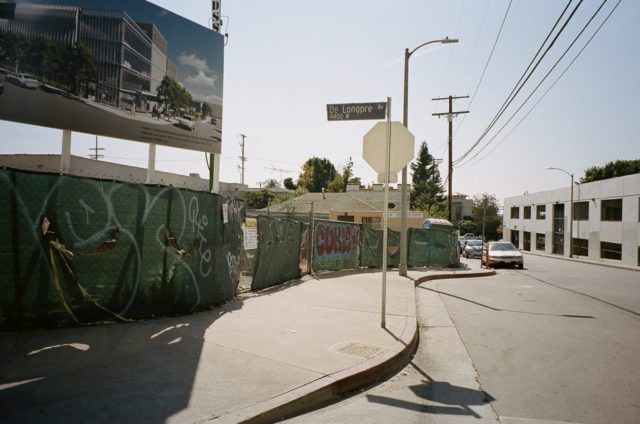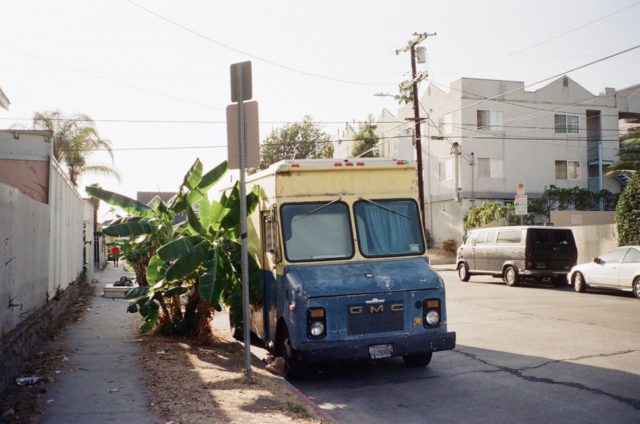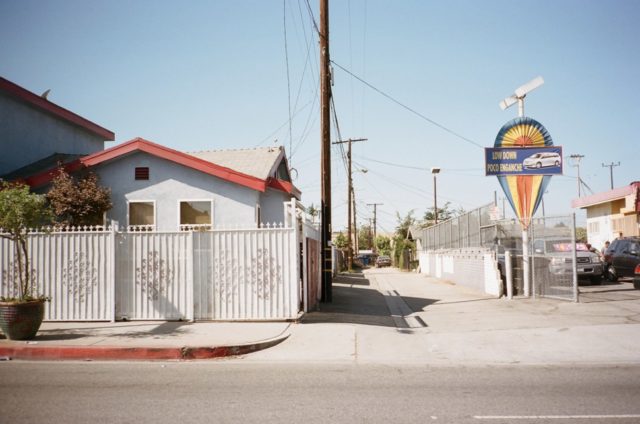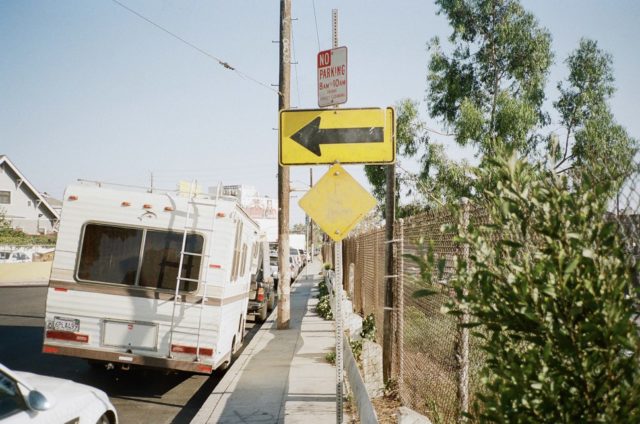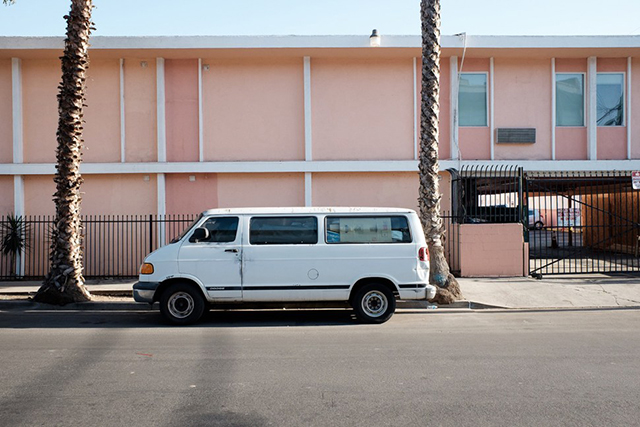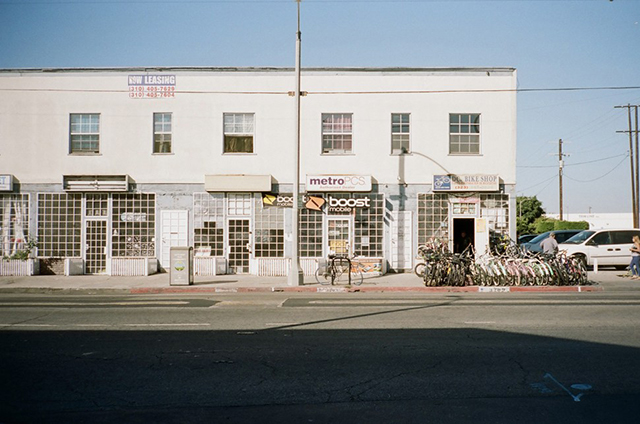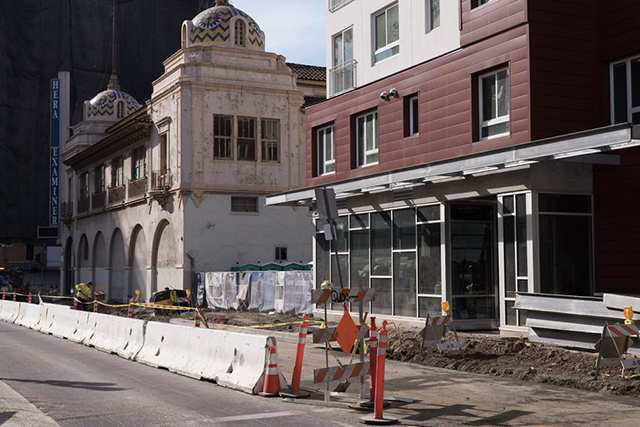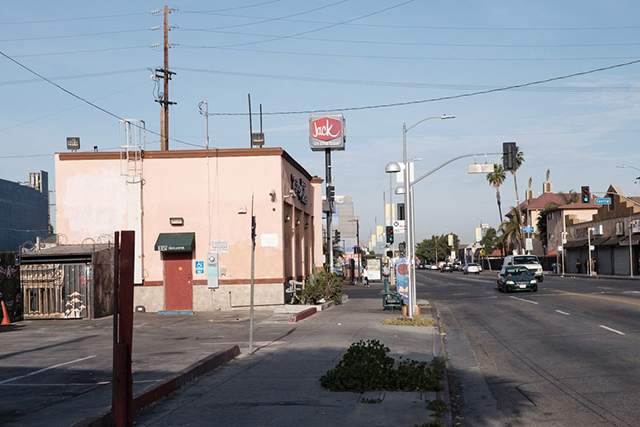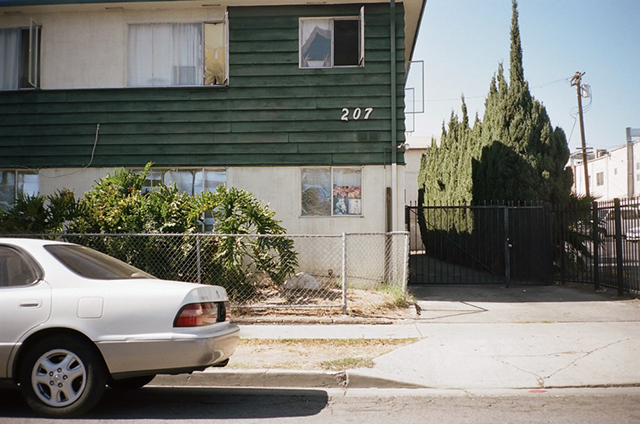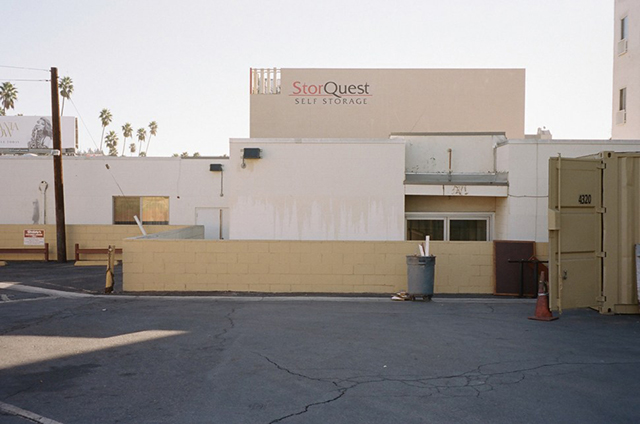Heart in Place: Kwasi Boyd-Bouldin
By Roger May
Orignially posted 21 May 2018 on Walk Your Camera with permission of Roger May and Kwasi Boyd-Bouldin
You might be wondering why you’re looking at pictures of Los Angeles on a blog that deal primarily with work from Appalachia. From my desk in Charleston, West Virginia, Los Angeles is more than 2,300 miles away, but there is a proximity of heart for place I find in Kwasi Boyd-Bouldin’s photographs that I’d like to share.
I first learned of Boyd-Bouldin’s work via Twitter, though I can’t remember exactly who shared it. I scrolled through some of his images online and was drawn in by his straightforward manner of looking. His compositions suggested an eye of someone looking beyond the surface and beyond the stereotype of place. This is not the Los Angeles you’ve often been shown.
After several months of following Boyd-Bouldin’s work on Twitter, and later Instagram, it occurred to me that he is looking at his corner of Los Angeles in a very similar way I’m making work in West Virginia and Appalachia. Despite the geographical differences, there is a common thread of love for place, a desire to show a more realistic portrayal of that place through critical looking and thinking, and to document the impact of the physical changes in the landscape of one’s home.
For all the things I detest about social media, every now and again, there are redeeming qualities. Had it not been for social media, I might have never known about Boyd-Bouldin’s work. I might have never had the chance to reach out to him to tell him how much I appreciate what he’s doing and why he’s doing it. I might never have had the chance to ask him about his work and to share some of that work here.
Boyd-Bouldin’s work is becoming more widely visible. In February of last year, he was included in TIME’s 12 African American Photographers You Should Follow Right Now and in November of last year, the New York Times LENS blog featured some of his photographs and a brief interview. One of the things he said in that piece illuminated a foundational element in the work he makes and made me think about the work I make: “In part, he says, the project is his intention to document a vanishing L.A. Few who live outside it even know it exists. He wants “to present a portrait of the city that reflects the lives of people who live in Los Angeles, as opposed to the glossy fictional version that dominates the mainstream narrative.” Just substitute Los Angeles with Appalachia or West Virginia or Kentucky.
In his series The Displacement Engine, in which he provides much needed critical thinking and viewing on the issue of gentrification, he writes, “The effort to push vulnerable populations to the margins may seem to be organic but it is often an organized campaign. Perpetual, neighborhood wide rent increases coupled with a total sustained lack of local infrastructure (grocery stores, good public schools, etc…) are the ingredients needed to initiate the desired effect.” In West Virginia it isn’t the same type of gentrification but it is systematic erasure. Apply this lens to look at the organized campaign of the coal industry to keep an already vulnerable population marginalized. In Mingo County, West Virginia, there isn’t a single grocery store in the entire county. Likewise, four of the county’s five high schools (Burch, Gilbert, Matewan, and Williamson) closed their doors in 2011 before consolidating into one school, Mingo Central, which is built on a reclaimed surface mine site.
I trust you’ll enjoy Boyd-Bouldin’s work and his thoughtful approach to place. Scroll through for our brief conversation, including a list of photographers he recommends following. You can see more of Boyd-Bouldin’s work at his website Kwasi Boyd-Bouldin and The Los Angeles Recordings. You can also follow him on Instagram and Twitter.
Roger May (RM): Can you talk about the importance of photographing the place you’re from and how that informs your pictures?
Kwasi Boyd-Bouldin (KBB): Most people’s idea of what life is like in LA (and Hollywood specifically) is completely based in fantasy. I didn’t feel that the city I grew up in was being accurately represented in the media so I started documenting things from my perspective. It’s always been my goal to depict what Los Angeles looks and feels like from the street level. I think everyone should photograph their neighborhood.
RM: How about the importance of film? How and when did you begin to incorporate film (and digital) into your work?
KBB: My relationship with film photography started out of necessity, it was the only affordable medium when I started to get serious about photography. Over the years I stuck with it because it became the easiest way to get consistent results. It forces me to incorporate the element of time into my workflow and that is something that I apply to all of my photography regardless of platform. I’ve gone back and forth over the years but recently I have shifted back to a digital workflow (Fuji X).
RM: Your work speaks to me on a number of levels, but I’m particularly interested in your relationship to place and how you work to show the human interaction or imprint on the landscape. What is it about the landscape you feel compelled to document?
KBB: I’m drawn to photographing the urban landscape because of an interest in depicting and navigating large systems. Los Angeles is a knot of interlocking cultures, neighborhoods, and influences and I’ve always been inspired by how everything intersects. And for me, the landscape is the universal element that connects all of these different components. Everyone leaves their mark in one way or another and by stepping back you can see how all of those marks look collectively. That perspective is what’s missing from mainstream depictions of L.A. (and most other places) so that’s what I have focused on with my work.
RM: Can you tell me a little bit about who and what inspires you? Do you care to share what you’re reading or listening to right now?
KBB: I have a wide range of creative influences ranging from a lifelong addiction to Anime and science fiction to random conversations to people I meet on the street. In the realm of photography I’m influenced by Jamel Shabazz, Gordon Parks, Stephen Shore, William Eggleston, Latoya Ruby Frazier, Thomas Struth, and far too many more to list.
My father played the flute and the xylophone and my two older brothers were in a semi-famous old school rap group called 7A3 so I have always been surrounded by music. As a result I listen to a bit of everything, my current rotation includes Kendrick Lamar, Thundercat, MF Doom, Kamasi Washington, Little Dragon, Flying Lotus, Jay Z, Dabrye, Prhyme, Madlib, and a ton of other artists I’ve forgotten.
RM: The issue of gentrification is something many living in towns and cities are becoming more and more aware of. How do you see photography holding space for that conversation and the intersection of art/documentary and socioeconomics/politics?
KBB: I think that documenting neighborhoods as they exist currently and how they are being transformed is critical. Photography can be a vital part of that conversation but more people from the areas that are being gentrified need to be given the platform to share their stories. It really comes down to which perspectives are valued and why some interpretations are prioritized above others. Using photography to contextualize the lives and surroundings of the people affected is just the start, there needs to be a conversation about how neighborhoods can be revitalized without forcing people out of them.
RM: Who are other photographers folks should be paying attention to right now?
KBB: I think that we’re in the midst of a golden age in photography and thanks to platforms like Instagram you can come across a lot of incredible work you would miss otherwise. I think the following people are doing amazing things: Luis Torres, Erwin Recinos, Idris Solomon, Sean Maung, Michael Santiago, Scott Hurst, Aaron Turner, Gioncarlo Valentine, Jon Henry, Wendel White, and Nadia Huggins.
Kwasi Boyd-Bouldin (kwasi.b@gmail.com) (b. 1977) is a Los Angeles based photographer whose work focuses on the urban environment. His work explores the relationship between a neighborhood’s physical composition and the lives of it’s inhabitants. He is best known for The Los Angeles Recordings, an ongoing documentary project comprised of photo essays about the rapidly changing landscape of the places he grew up in. He has been featured in The New York Times, Slate France, and he is one of Time Magazine’s 12 African American Photographers to Follow.
